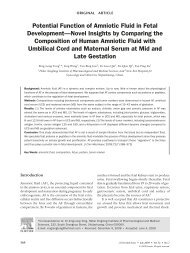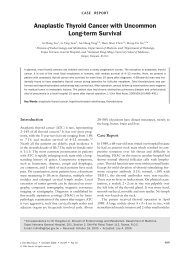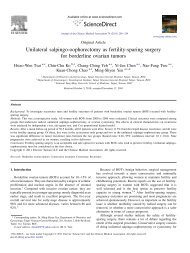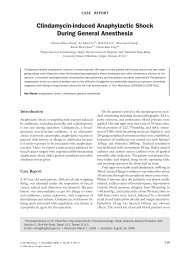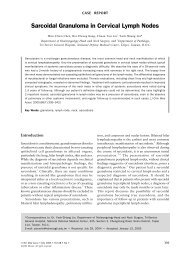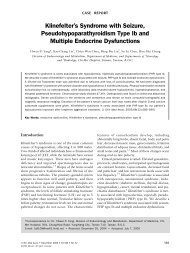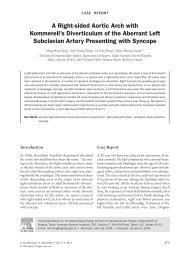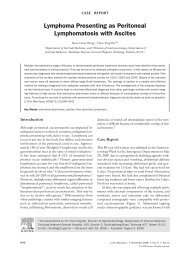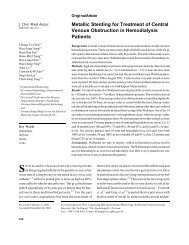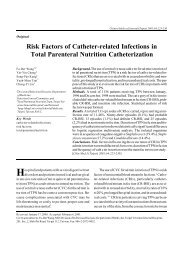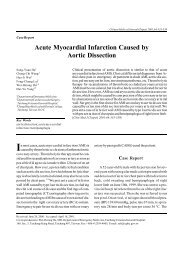Surgical Anatomy of Supratentorial Midline Lesions
Surgical Anatomy of Supratentorial Midline Lesions
Surgical Anatomy of Supratentorial Midline Lesions
You also want an ePaper? Increase the reach of your titles
YUMPU automatically turns print PDFs into web optimized ePapers that Google loves.
adjacent territories. This occurs via association, commissural, and projection pathways and helps to explain the increasing phenomena <strong>of</strong><br />
gliomatosis cerebri and mutlicentricity. For example, most insular-based gliomas have components in the temporal and frontal lobes. The<br />
detailed demonstration <strong>of</strong> the uncinate fasciculus clearly documents how this takes place. This fasciculus must be identified and entered,<br />
underlying the middle cerebral artery bifurcation, during removal <strong>of</strong> insular gliomas.<br />
Our knowledge <strong>of</strong> subcortical functional pathways continues to be deficient, and, unfortunately, an anatomic study such as this cannot<br />
provide the missing pieces to the puzzle. Notwithstanding, this is a valuable anatomic study using the fiber dissection technique, which will<br />
serve as an excellent substrate to aid in our understanding <strong>of</strong> these critical pathways during surgery and to explain the pathophysiology <strong>of</strong> certain<br />
disease states that we encounter on a daily basis.<br />
Mitchel S. Berger<br />
San Francisco, California<br />
This is an unusual and interesting article, describing an older anatomic technique that is perhaps underappreciated today. Türe et al. present<br />
a description <strong>of</strong> the fiber dissection technique, a “tour" <strong>of</strong> hemispheric fiber tract anatomy using the technique, and a fascinating historical<br />
account.<br />
This is not a quantitative description <strong>of</strong> fiber tracts based on their investigation; however, it does provide a better appreciation for the<br />
three-dimensional, nonlinear organization <strong>of</strong> the brain and its importance to neurosurgery. This is sufficient reward for the reader; however, if<br />
one also is left with the temptation to visit the anatomy or pathology department and try the technique, à la Willis, Bell, Reil, Gall, Rolando, and<br />
Meynert, that is icing on the cake.<br />
David W. Roberts<br />
Lebanon, New Hampshire<br />
Key words: Fiber dissection technique; Microsurgical anatomy; White matter<br />
Accession Number: 00006123-200008000-00028<br />
Copyright (c) 2000-2005 Ovid Technologies, Inc.<br />
Version: rel10.2.0, SourceID 1.11354.1.65



